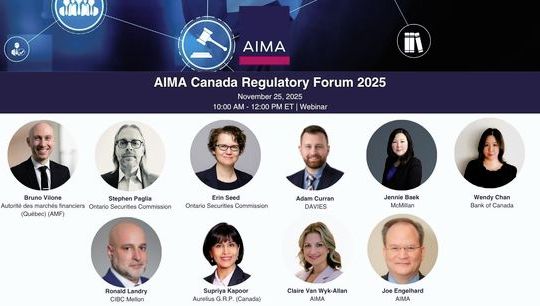ESMA guidelines on marketing communications
By Owen Lysak; Ramya Juwadi; Adam Robins, Simpson Thacher & Bartlett LLP
Published: 27 June 2022
The recent cross border distribution of funds package of rules (Regulation EU 2019/1156 and Directive (EU) 2019/1160) (the CBDF Rules) attracted a lot of attention in respect of its changes to the approach to pre-marketing and reverse solicitation when raising capital from EEA investors. We now see attention turning to the accompanying ESMA Guidelines on Marketing Communications (ESMA 34-45-1272) (the Guidelines), in force from 2 February 2022, which have introduced additional content requirements for marketing materials being shared with EEA investors.
What are marketing communications?
One particular area of debate has been exactly which materials are in scope of the Guidelines. The Guidelines do not define marketing communications, but give some non-exhaustive lists of examples of documents that should be considered as marketing communications:
- Marketing material addressed individually to investors or potential investors on the fund manager’s website or elsewhere (e.g., made available at the fund manager’s office)
- Communications advertising a fund addressed to EEA investors
- Communications by a third party used by a fund manager for marketing purposes
These categories of documents would all be naturally what would be regarded as marketing materials. However, interestingly, the Guidelines also give examples on what should not be treated as marketing communications under the Guidelines:
- Legal and regulatory documents of the fund, including a prospectus and the Article 23 disclosures (the specific information required to be disclosed to EEA investors under AIFMD)
- Information issued in the context of pre-marketing as defined in the CBDF Rules (so documents like teasers or presentations, that are often debated as to whether they are permitted AIFMD premarketing in the EEA - see under “Pitch-books/presentation decks”).
PPMs
PPMs, which some might regard as the main marketing document for a fund, are not mentioned in the Guidelines, and prospectuses are explicitly excluded from scope. What is not clear is whether the word prospectus is restricted to meaning a prospectus required under the EU’s Prospectus Regulation (which would be reviewed thoroughly by regulators in addition to being subject to detailed content requirements). Alternatively, was the word prospectus meant to include PPMs too, especially given that in some countries the two words are used interchangeably? National regulators may not all follow the same approach on this particular scope question. Some in the market are considering that PPMs are out of scope as they could be regarded as a legal or regulatory document of the fund. While a PPM serves as a vehicle for the Article 23 disclosures to EEA investors as required under AIFMD (and therefore is a legal requirement), the commercial sections of a PPM will cover much more ground than regulatory disclosure strictly requires, and are fundamentally promotional, with the aim of attracting investors. Therefore the prudent approach would be to review the commercial section of a PPM for compliance with the Guidelines.
Pitch-books/presentation decks
Pre-marketing, (as codified under the CBDF Rules), include documents like a teaser, presentation or pitch-book, and is excluded from scope. However, the Guidelines represent the first time EEA regulators have set down their expectations in relation to content requirements, and a wise approach includes compliance with at least some parts of the Guidelines (particularly the fair, clear and not misleading ones) in respect of pre-marketing materials as well.
Detailed requirements under the Guidelines
Some of the requirements of the Guidelines are quite granular and will necessitate a more careful review of marketing communications addressed to EEA investors.
1. Identification of marketing communications
The Guidelines note that marketing communications should include sufficient information to make it clear that the communication
i. has a marketing purpose
ii. is not a contractually binding document
iii. is not an information document required by any legislative provision, and
iv. is not sufficient to take an investment decision.
Where a marketing communication includes prominent disclosure of the term ‘marketing communication’, it will be deemed to be compliant with the requirement of being identifiable as such. There is also prescribed disclosure language that materials will need to incorporate.
2. Equal prominence to risks and rewards
The Guidelines also include detailed requirements on presentation of risks and rewards information. This includes that the font and size used to describe the risks should be at least equal to the predominant font size used throughout the marketing communication, and that risks should be displayed in a prominent position.
Risks can no longer be disclosed in footnotes, which might present a challenge in the context of marketing decks and pitch-books. The size requirements might mean that more thought would need to be put into what risks are included in such documents.
3. Fair clear and not misleading
There are some granular requirements on the content of marketing communications being fair, clear and not misleading.
Over-optimistic wording
The marketing communication should not make use of over-optimistic wording such as best fund or best manager and should refrain from diminishing the risks of the investment such as safe investment or effortless returns without clearly explaining that such rewards may not be obtained and that there is a risk of losing all or part of the investment.
Comparison with other funds
The fund being promoted may only be compared with other funds characterised by a similar investment policy and a similar risks and rewards profile, unless an explanation on the difference of the funds is also included.
Past performance
There are detailed requirements on disclosing past performance and simulated past performance of a particular fund. Where there is no past performance (e.g. for new funds), simulated past performance can only be disclosed in limited circumstances, such as a new share class simulating performance based on the performance of an existing share class, or in case of a feeder simulating based on the performance of the master fund. Where a new fund uses a benchmark or objective return, the reward profile may only refer to such benchmark or return.
As there are specific requirements mentioned for new funds, the general market view has been that track record information of the manager on performance in previous funds is not subject to the requirements on past performance. There are also requirements on expected future performance, including being based on reasonable assumptions supported by objective data, and on a time horizon that matches the time horizon of the fund. Future performance must be accompanied by some disclaimer language.
There are not yet settled market views or practices on the questions around the Guidelines. For now, fundraising preparations should include a more detailed review of marketing materials when they will be directed at EEA investors.
Non-EEA sponsors
While it is clear that the CBDF Rules and the Guidelines apply to EEA sponsors, they are both silent on whether they apply to non-EEA sponsors looking to market their funds to EEA investors under national private placement regimes. There is some variance in approach between EEA countries on whether the CBDF Rules apply to non-EEA sponsors. From a practical perspective, this variance means that non-EEA sponsors seeking to market into multiple EEA jurisdictions will need to ensure compliance with the CBDF Rules and the Guidelines. It is likely that the Guidelines were intended to apply to non-EEA sponsors marketing in the EEA as well, given that one of the objectives of the package of rules is investor protection.







